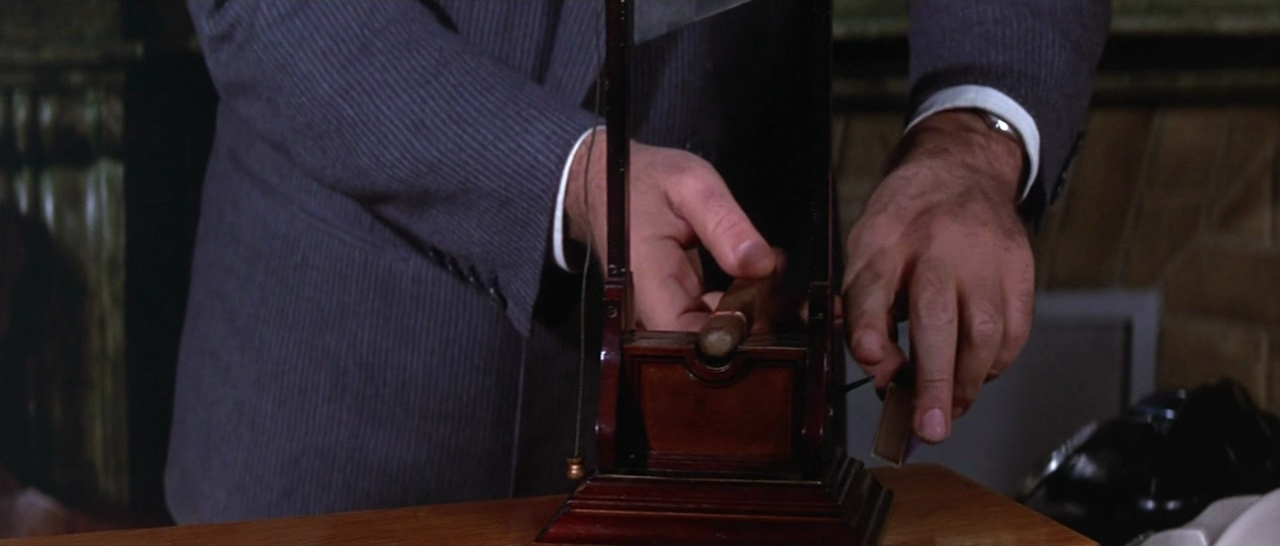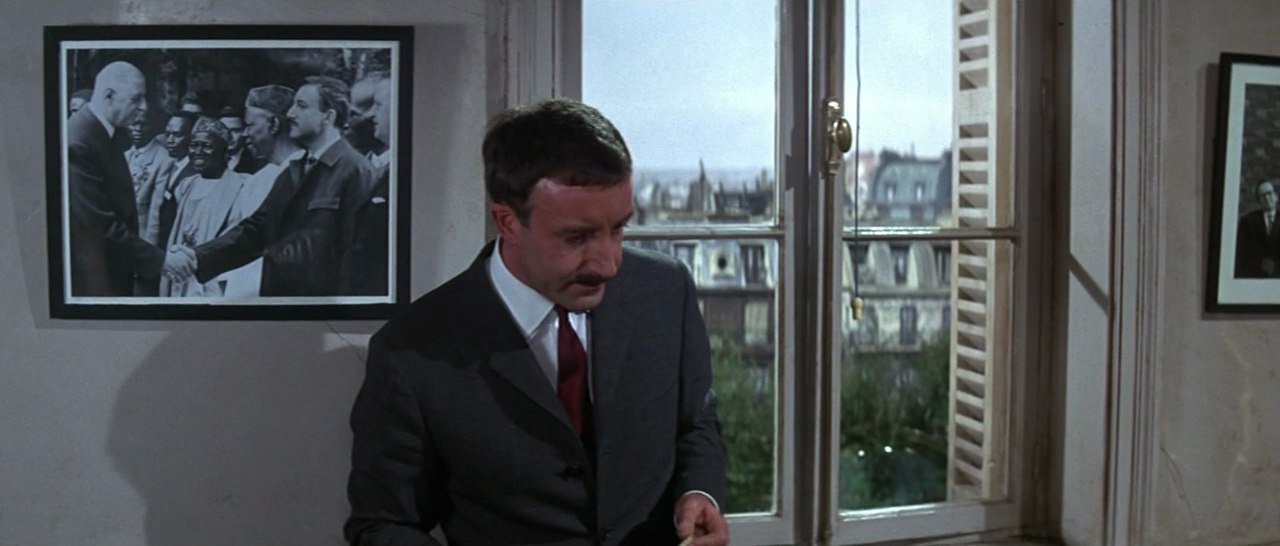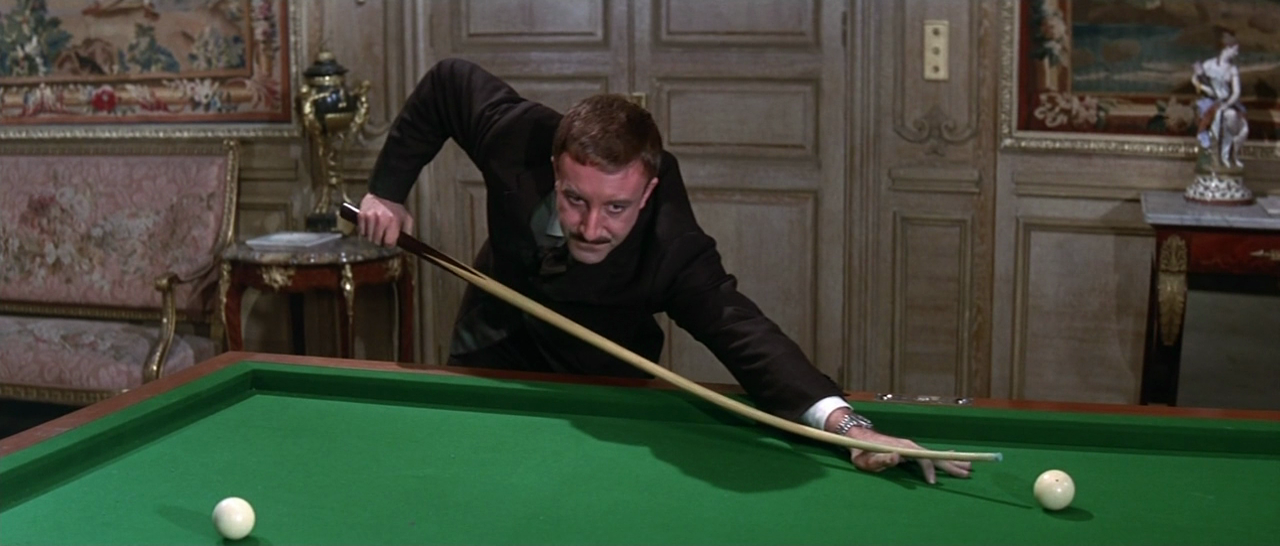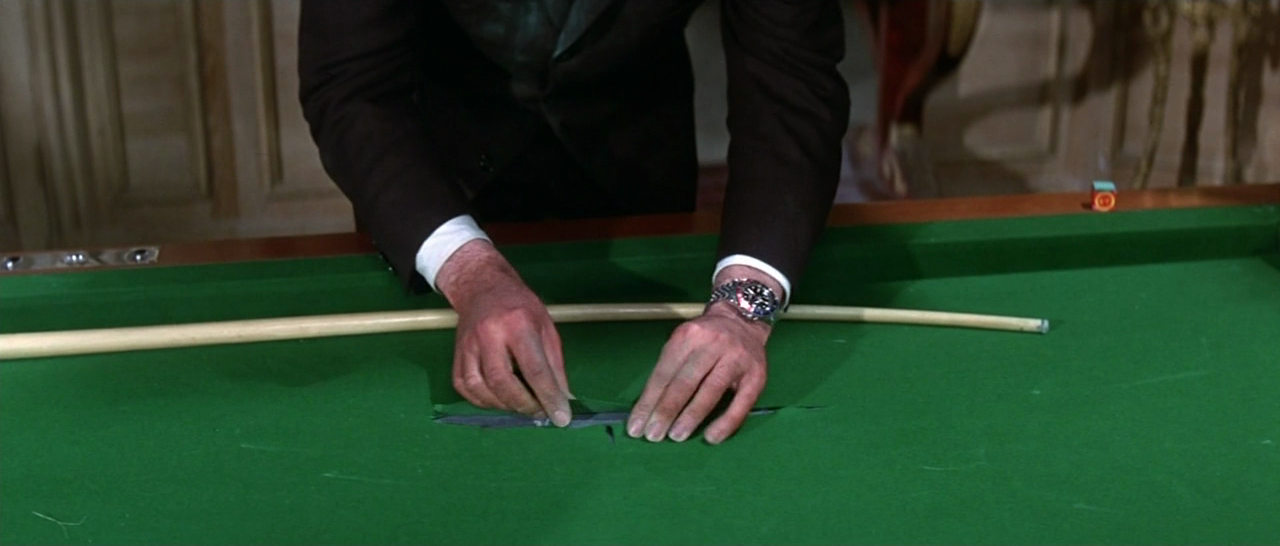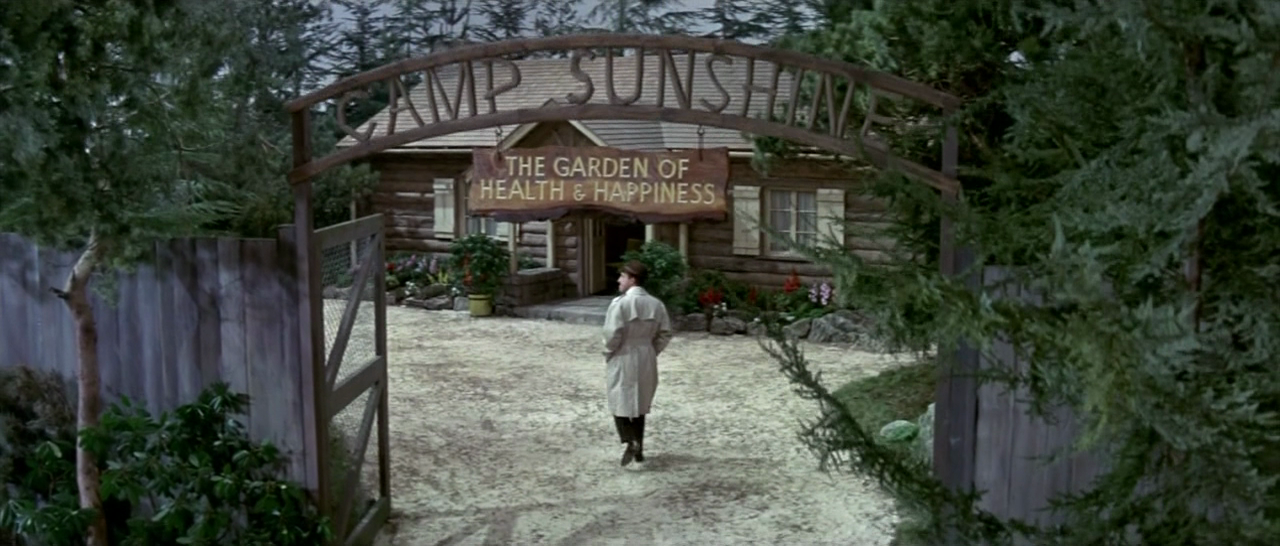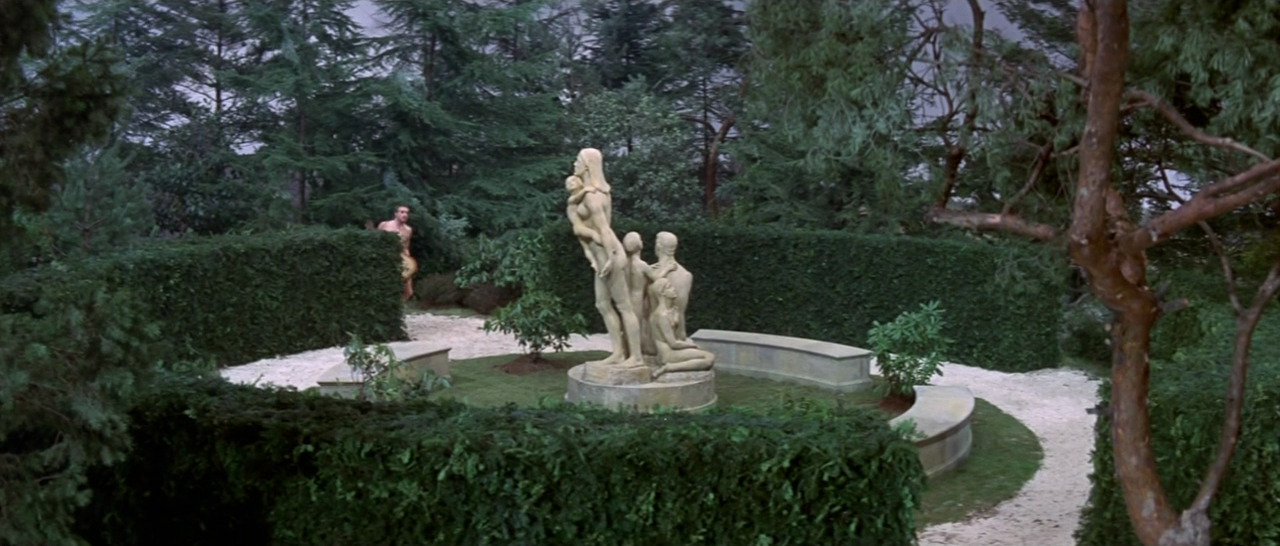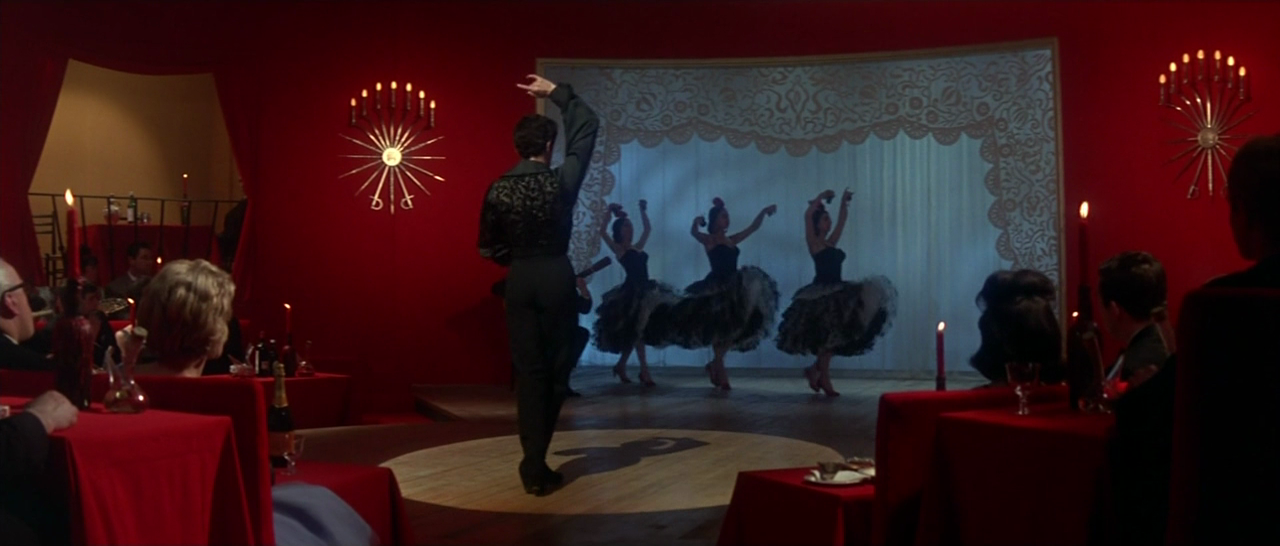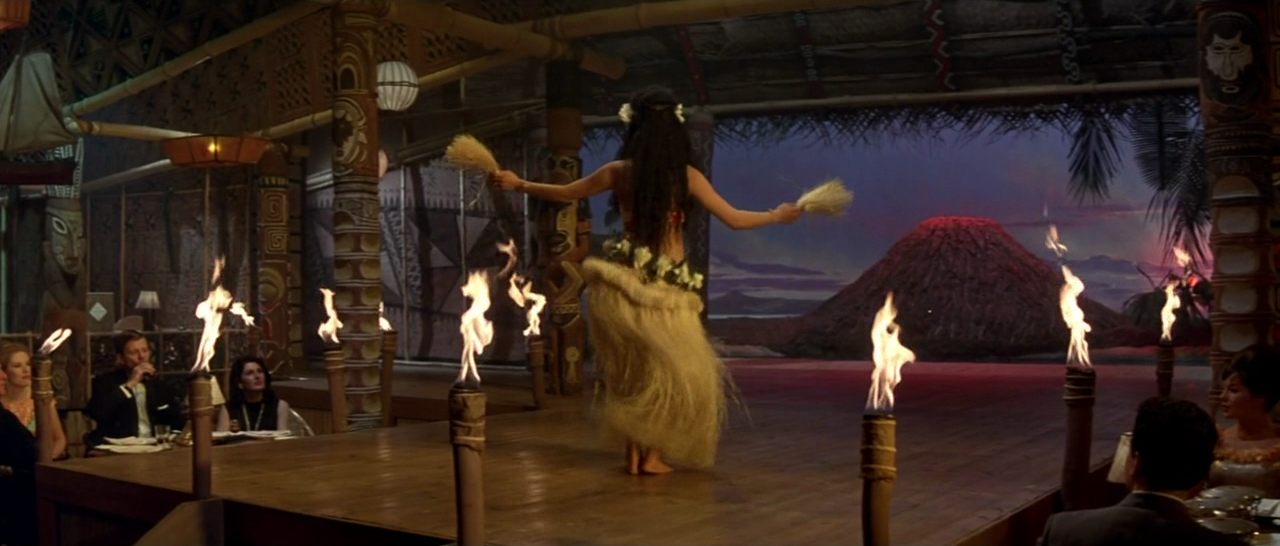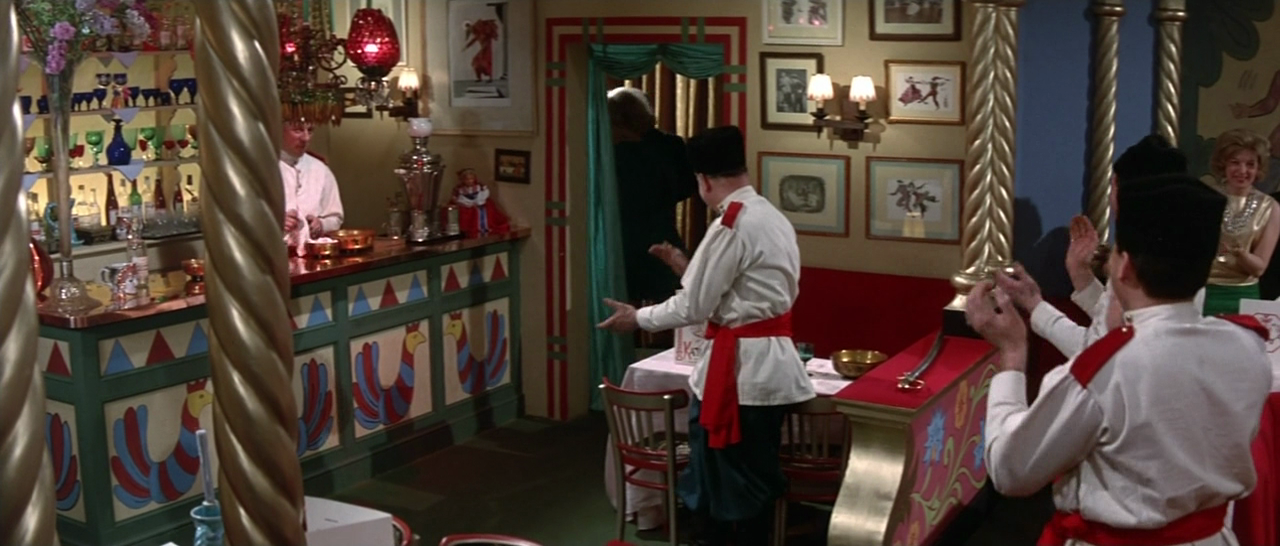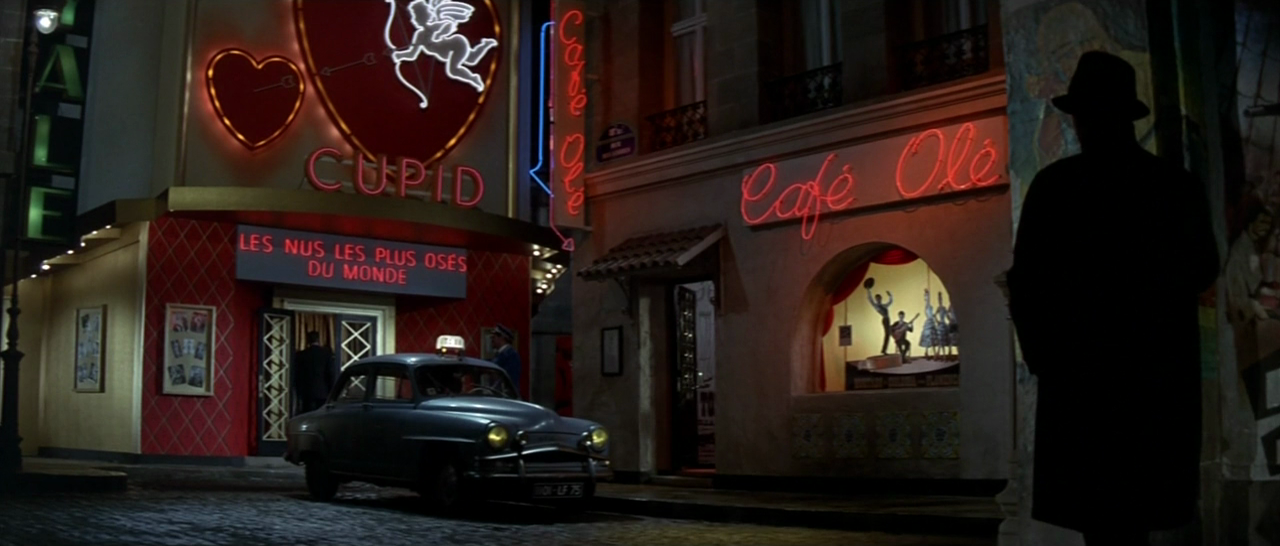"The Furniture," by Daniel Walber, is our weekly series on Production Design. You can click on the images to see them in magnified detail.
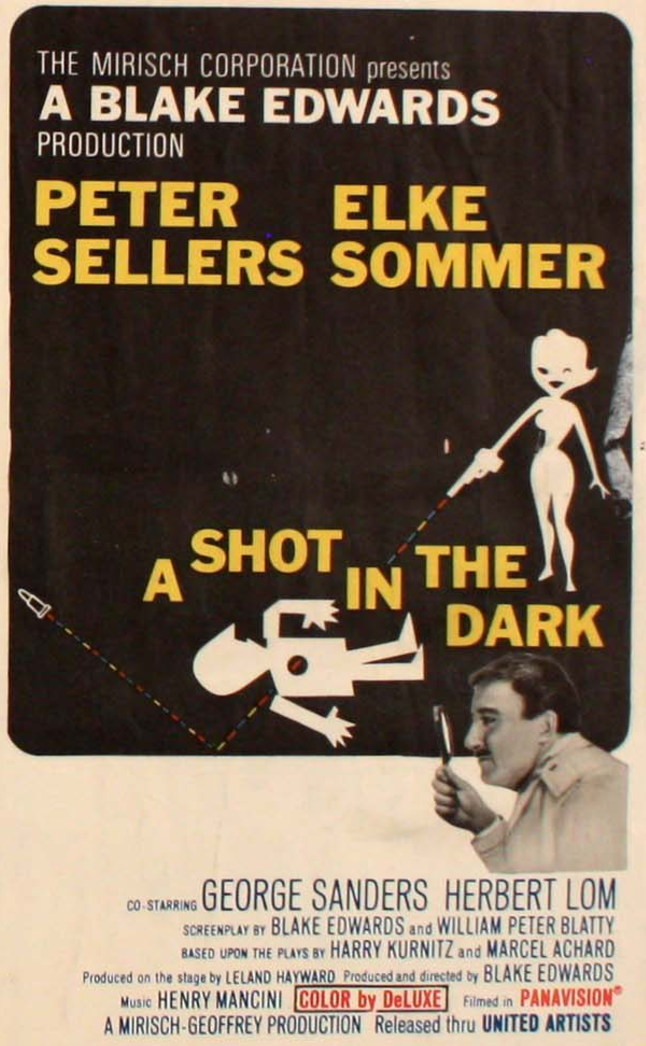 Before we get started, let’s all share a brief moment of resentment that Judy Becker didn’t win a production design Emmy last night for Feud. Boo.
Before we get started, let’s all share a brief moment of resentment that Judy Becker didn’t win a production design Emmy last night for Feud. Boo.
Anyway, back to your regularly scheduled episode of The Furniture. Today is the 100th anniversary of the birth of Herbert Charles Angelo Kuchačevič ze Schluderpacheru, the character actor otherwise known as Herbert Lom. He fled Nazi-occupied Czechoslovakia in 1939 for Britain, where he would have a long career in both film and television. He appeared in three Best Production Design nominees: El Cid, Spartacus, and Gambit. I will be writing about none of them.
Instead, here’s some love for the design of the films for which he is remembered most widely. Lom played Police Commissioner Charles Dreyfus, the long-suffering boss of Inspector Clouseau, in seven Pink Panther films. The first of these, A Shot in the Dark, is probably the best of the lot. It also has some charmingly ridiculous prop comedy and an array of colorfully absurd sets.
Here, for example, is the first example of a gag that runs throughout the series...
Dreyfus keeps a silly but dangerous object in his office and ends up harming himself through his careless rage at Clouseau. In this case it’s a guillotine/cigar cutter, with which he beheads his own thumb. (Oddly, Lom later wrote a novel about the inventor of the guillotine.)
Another favorite object is this doctored photo of Clouseau and President Charles DeGaulle, which hangs in the inspector’s office.
The apotheosis of this prop comedy, however, comes in a hilarious billiards sequence. Clouseau (Peter Sellers) is working a case at the house of Benjamin Ballon (George Sanders), where people keep ending up dead. The billionaire suspect invites the inspector to play pool, giving him this ridiculous cue.
Clouseau, never one to turn down a challenge, winds up stabbing a hole in the table.
The game is cut short, obviously, and Clouseau turns to reshelf the ridiculously overstocked cue rack. It goes about as well as you’d expect.
The Pink Panther films are brimming with this kind of broad prop comedy. Nothing is subtle. The comedy rushes out, guns blazing with the spirit of a 1960s Don Quixote. The same is true of the sets. Production designer Michael Stringer, who would later receive an Oscar nomination for Fiddler on the Roof, assaults the eye with earnest nonsense. Here, for example, is the entrance to a nudist camp.
Hidden within is this enormous, tacky sculpture of an entirely naked family.
The climax of set design comes in the acceleration of the last act, when Clouseau and Maria Gambrelli (Elke Sommer) narrowly evade murder in a series of increasingly kitschy nightclubs. The first is Spanish-themed, where the hidden killer tries to hide his gunshot amid the stomps of the flamenco dancer.
This is followed by a Polynesian joint, where a hula dancer performs in front of a painted volcano and the would-be assassin attempts to down Clouseau with a blow-dart.
Finally, a botched poisoning downs an innocent cossack in this drastically over-decorated Russian restaurant.
It’s hard to describe this as kitsch, because the design is utterly self-aware. Yet it’s not ironic, either. It’s just silly, in the broadest way possible. These sets are almost like the design equivalent of the slapstick prop comedy, a humor as naked as Camp Sunshine or the girls advertised by the neon sign for this strip club.
